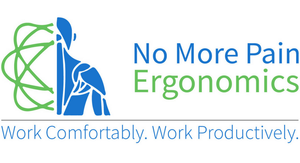-
Shop
- 🔥 Warehouse Clearance Sale 🔥
- Ergonomic Mice
- Ergonomic Keyboards
- Specialised Ergonomic Mice
- Standing Desks
- Ergonomic Chairs
- Laptop Stands & Risers
- Monitor Risers
- Computer Monitor Arms
- Footrests
- Wrist and Forearm Supports
- Back Supports
- Tablet Accessories
- Boardroom Chairs
- Headsets
- Other Ergonomic Equipment
- Online Ergonomic Training Courses
- New Products

- For Customers
- For Business Customers
- For Health Professionals
- About Us
- Reviews
You've made the purchase.
You've set it up at the workstation.
What now?
You have heard the incredibly wonderful benefits of standing while working, and if not, please visit the following blog post here for more: Health Benefits of Standing Desks.
In this post we will look at how to transition to working with a sit stand desk in the safest way and how to use it optimally to ensure you receive the greatest benefits for a long time to come.
Dos:
Start Slow
If you have been at your desk for 7-8 hours a day sitting, changing to standing in frequent sections throughout the day can take its toll on the body. Your body requires time to build the muscle and joint strength to adjust with standing for frequent periods of time.
Start with standing for 30 minutes a day and work up over a couple of weeks.
Below is an image of how to structure your work day to alternate between sitting, standing and walking for healthier work. As most desk jobs do not require walking for productive tasks, 'substituting sitting and standing in alternating bouts' would be the most ideal, productive schedule for a work day.
Image provided by: www.safeworkaustralia.gov.au
Liquid error (templates/article.gem-384161185889-template line 18): product form must be given a product
Use a Mat
Although the Safe Work Australia Guidelines state it is not a necessity to use a mat for good ergonomics; if you are on a hard surface (hardwood floors, tiles, cement, commercial carpet) an anti-fatigue mat could be essential for your comfort while in the standing position. The mat provides extra support to your joints and padding for your feet - you will definitely feel the difference by using one. Studies have shown workers have stopped using their standing desks due to discomfort in the feet and joints, so although not technically 'ergonomic', an anti-fatigue mat will increase comfort and provide support to the worker to use the standing desk more regularly.
Ensure Your Monitor is at the Right Height
Having the flexibility to change from sitting to standing is one of the greatest and healthiest ergonomic solutions since the office workspace was invented. However, please remember your other core ergonomic needs. Having a computer screen sitting on the desk may be too low for your eye height and can cause neck and shoulder pain over time. Ensure to place your monitor on a monitor riser or monitor arm on a standing desk.
Liquid error (templates/article.gem-384161185889-template line 18): product form must be given a product
Set A Timer
We are busy at work, and focus on the task at hand can lead us to forget about how we are sitting/standing. To ensure you are reminded to sit or stand, simply set a timer on your phone or computer. After a bit of time alternating between sitting and standing will become an automatic (and healthy!) habit that will bring you the most health benefits to your work life.
An Important Note
The transition to using a standing desk should not present any new pain or discomfort. Studies have shown when people experience pain or discomfort while transitioning to using a standing desk, deters them from using it in the future and the health benefits are not shown. If you do find you have new presenting problems, check the above steps and try to adjust your schedule and environment so that you are supported - also, feel free to contact our team for any other suggestions to help you in using your new, best healthy asset for the work space.
View our full selection of standing desks here – if you have any questions at all, our staff would love to help. Send your inquiry to info@nomorepainergonomics.com.au and our team of experts will get back to you as soon as possible.







